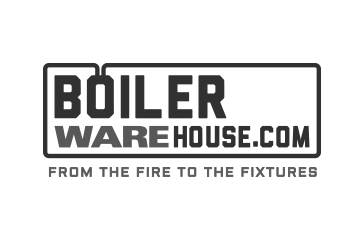Ignitors and Accessories
We stock many different ignitors, ignition rods and flame rods for all brands of burners. We also supply ignition transformers, ignition wire and fittings for all sorts of configurations of burners.
If you do not see the part you want below, feel free to use the chat function and see if we possibly have the part you are looking for in stock.

Ignitors and Accessories Categories
Manufacturers View all
Most Popular
-

Electrical
SPRING/90D NYLON CAP Ignition End
- SKU:
- 55211
What is an Ignitor & what is its function?
The spark that starts it all.
Ignitors create the spark that sets off the fuel flowing through the burners in a boiler’s furnace. They work in tandem with other components to make sure that the fuel burns properly and evenly to maximize boiler efficiency and longevity.
Different Types of Water Treatment Equipment & How to Choose
Modern ignitors are what’s known as Hot Surface Ignitors.
Rather than creating a spark across a gap, a hot surface ignitor ignites burner fuel by running current through a thin wire made of a very durable semiconductor like silicon carbine or silicon nitride. As the current passes through the wire, the wire gets extremely hot and begins to glow, similar to a light bulb filament. After just a few moments of current, the wire becomes hot enough to cause the fuel to light.
Ignitors work in tandem with a sensor that confirms the ignitor is functioning properly before fuel is allowed to flow. This ensures the fuel burns as soon as it enters the burner, so it isn’t allowed to collect before ignition and cause an explosion.
Ignitors
Ignitors house the wire and the insulators around it, creating enough resistance to cause the wire to heat up.
Cable
Cable is used to connect the ignitor to a power source. Because of the amount of current flowing through it, ignition cables have to be durable, and heavily insulated.
Ignition Ends
Ignition ends act as a socket or bracket between the cable and the hot surface ignitor itself. This makes it easier to inspect and replace the hot surface ignition module.
The Role an Ignitor Plays in a Boiler
An ignitor is a safer, more fuel-efficient replacement for the good old-fashioned pilot light. Unlike a pilot light, though, an ignitor doesn’t require a fuel supply. Ignitors also operate when needed, rather than staying on all the time.
what is the Effect of a Bad Ignitor?
When an ignitor goes bad, it won’t light. With modern systems, that means the sensors that confirm safe combustion conditions won’t be activated, and the fuel won’t flow. While ignitors are made of extremely durable materials including silicon nitride, silicon carbide, and high-temperature ceramics, the conditions under which they operate are extreme.
Things to Consider about ignitors:
- Before ignition, it’s important to perform a purge cycle to get any unburned fuel or combustion gasses out of the burner area.
- Have the incoming voltage to your ignitor checked during inspections and regular maintenance. Voltage that’s too high will shorten the life of the ignitor. Voltage that’s too low will prevent it from getting hot enough to do its job.
Helpful Resources
Relevant WARE Videos on Ignitors
Explore over 750+ explanatory videos on boilers and boiler systems on our Youtube channel. Our videos can help you quickly grasp complex boiler topics. Watch more here!
Relevant WARE Blog Articles on Ignitors
What Parts to Keep On-Hand at All Times
Brother, can you spare a purge controller?
Cleaning the Burner's Flame Sensor
A Quick Scan of Flame Scanners
Tuning the Combustion on a Steam Boiler
Autoflame Leads The Way in Boiler Combustion Management Controls
Our informative and educational blog content can help you gain a deeper understanding of the boiler room. Read more here!
Technical Documents
Ignitors FAQ
How does an ignitor know when to fire?
The ignitor is part of an ongoing cycle of safe operation, really. When the boiler control system calls for flame, it will confirm several parameters are met before sending a signal to the ignitor to start combustion. The ignitor will then turn on its current, making the wire glow.
How long do ignitors last?
Even though they’re subjected to extreme conditions, ignitors typically last between five and ten years.
How long does it take the wire to get hot enough to burn fuel?
The silicon carbide or silicon nitride wire only takes a few seconds to get hot enough to ignite fuel.
Why can’t I just toss a lit match into the furnace before turning on the gas?
If fuel is allowed to collect in any significant quantity inside the furnace before igniting, it will cause an explosion once that fuel reaches any ignition source. That will damage your entire boiler system, or worse.





